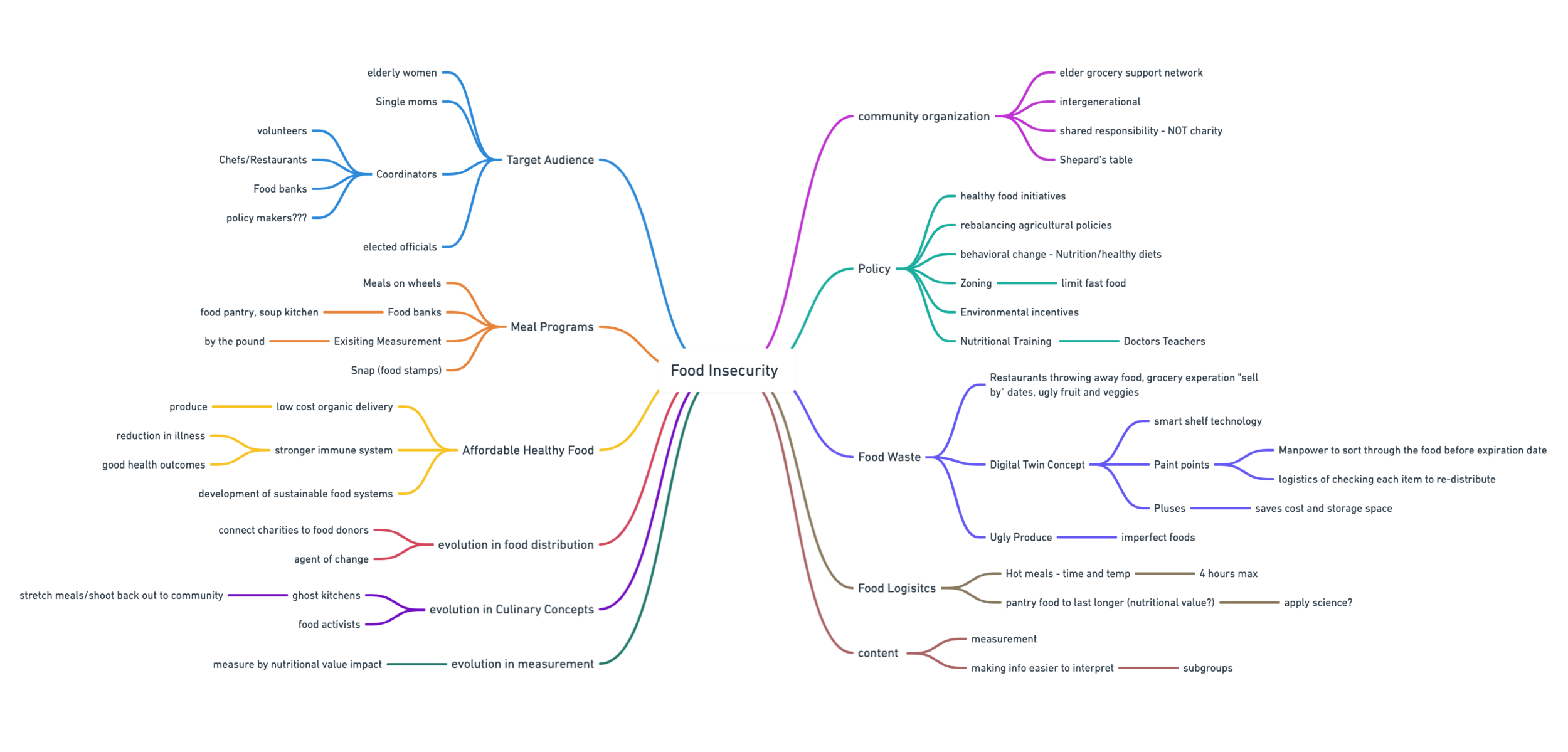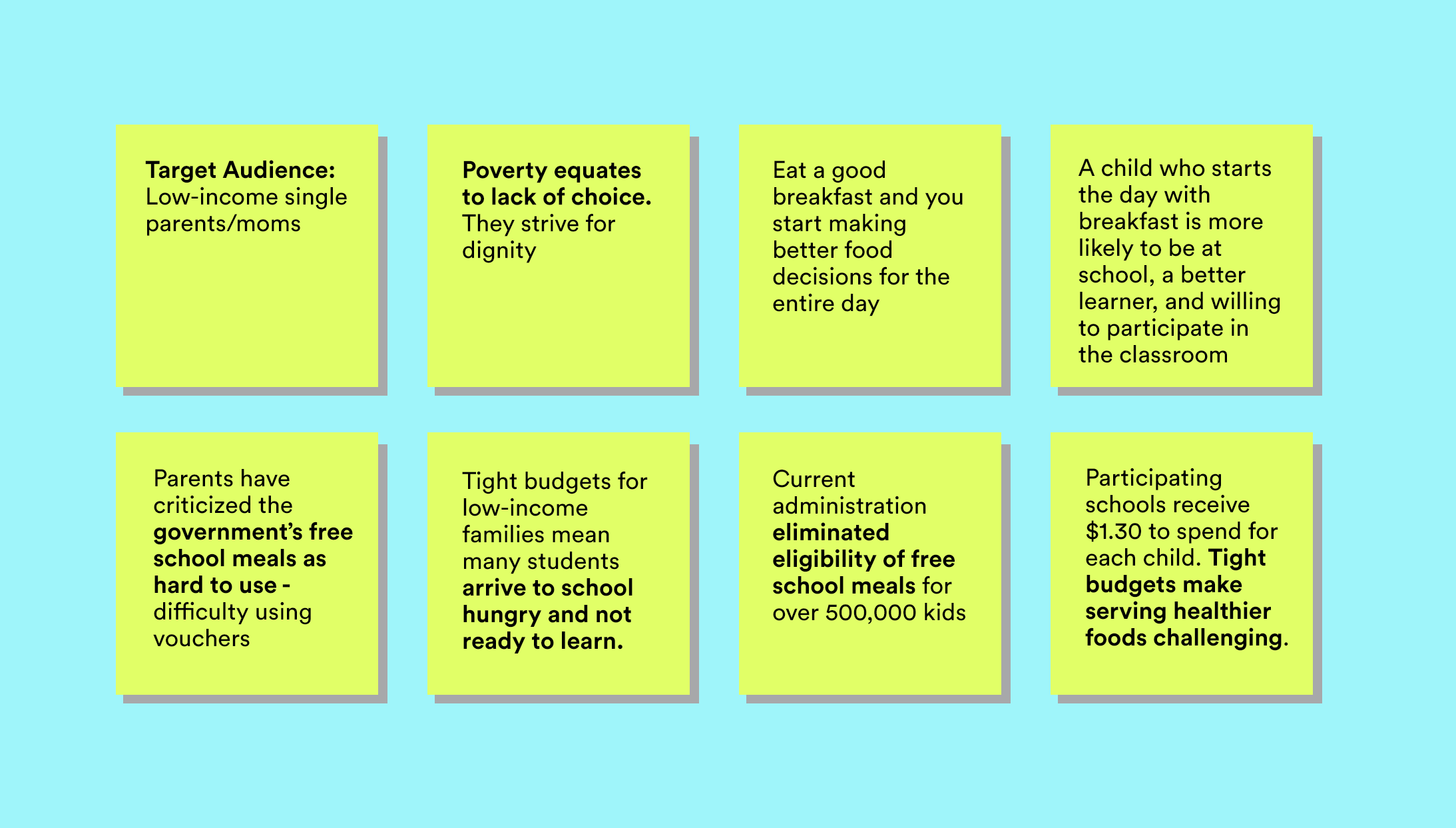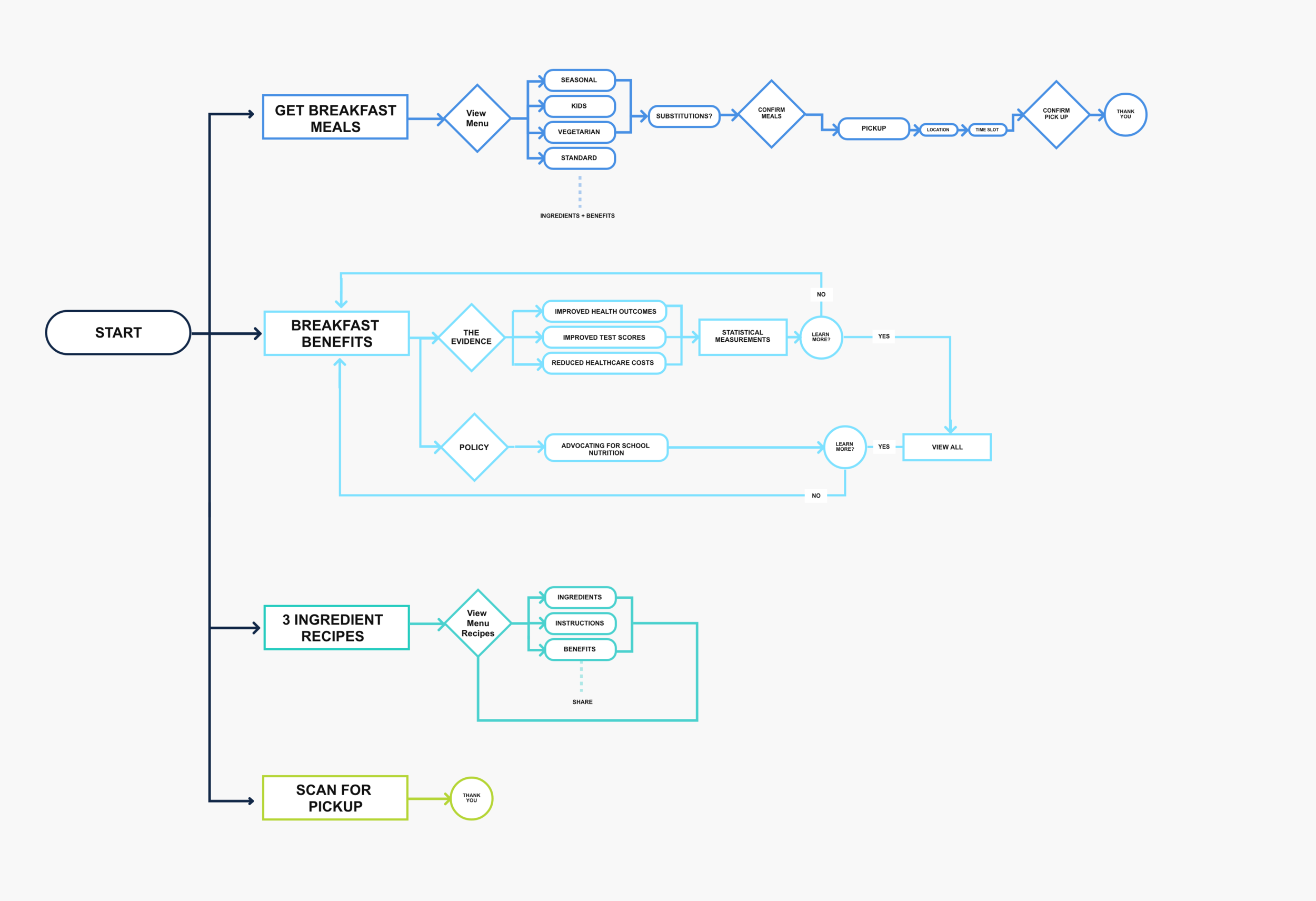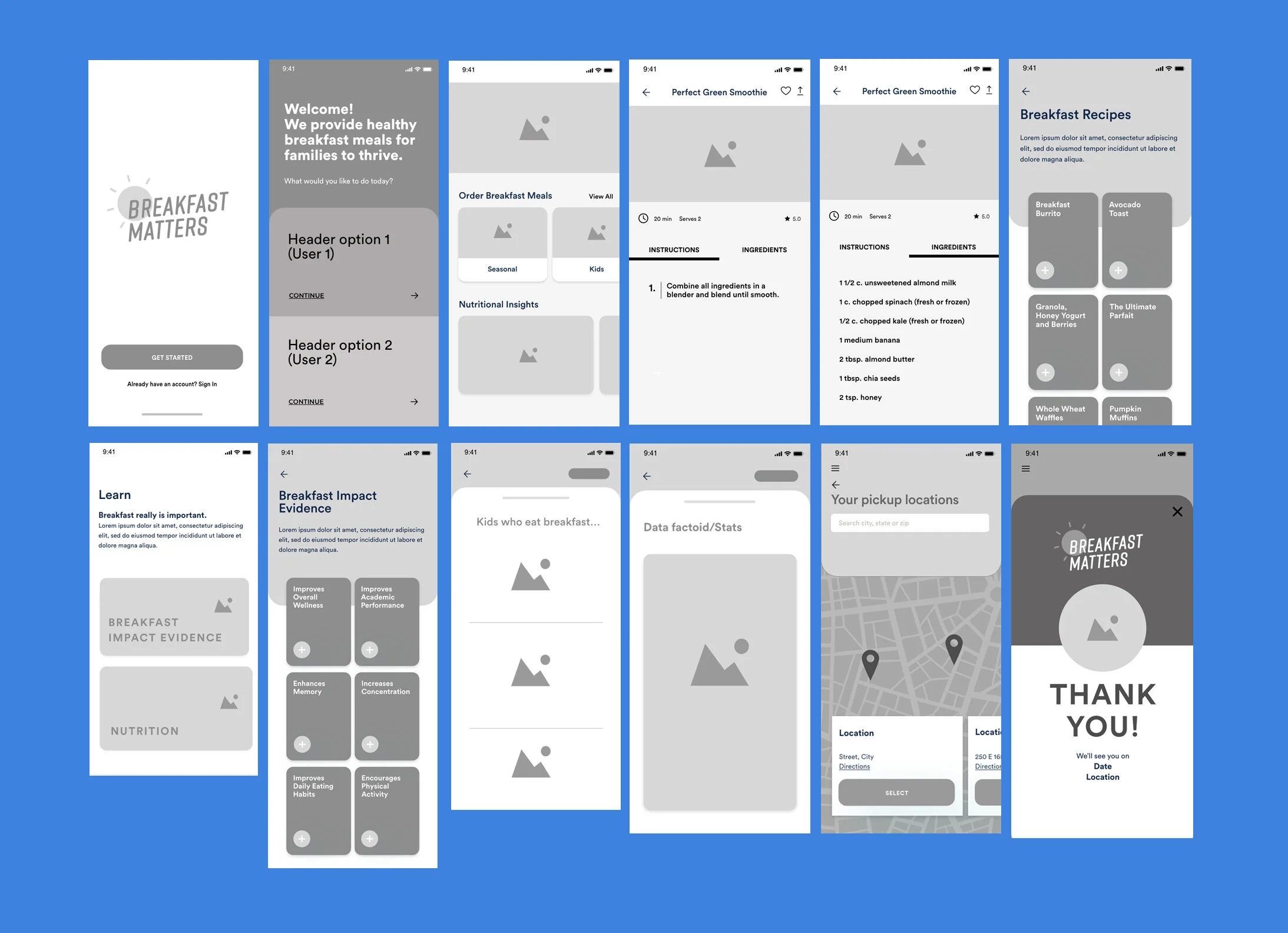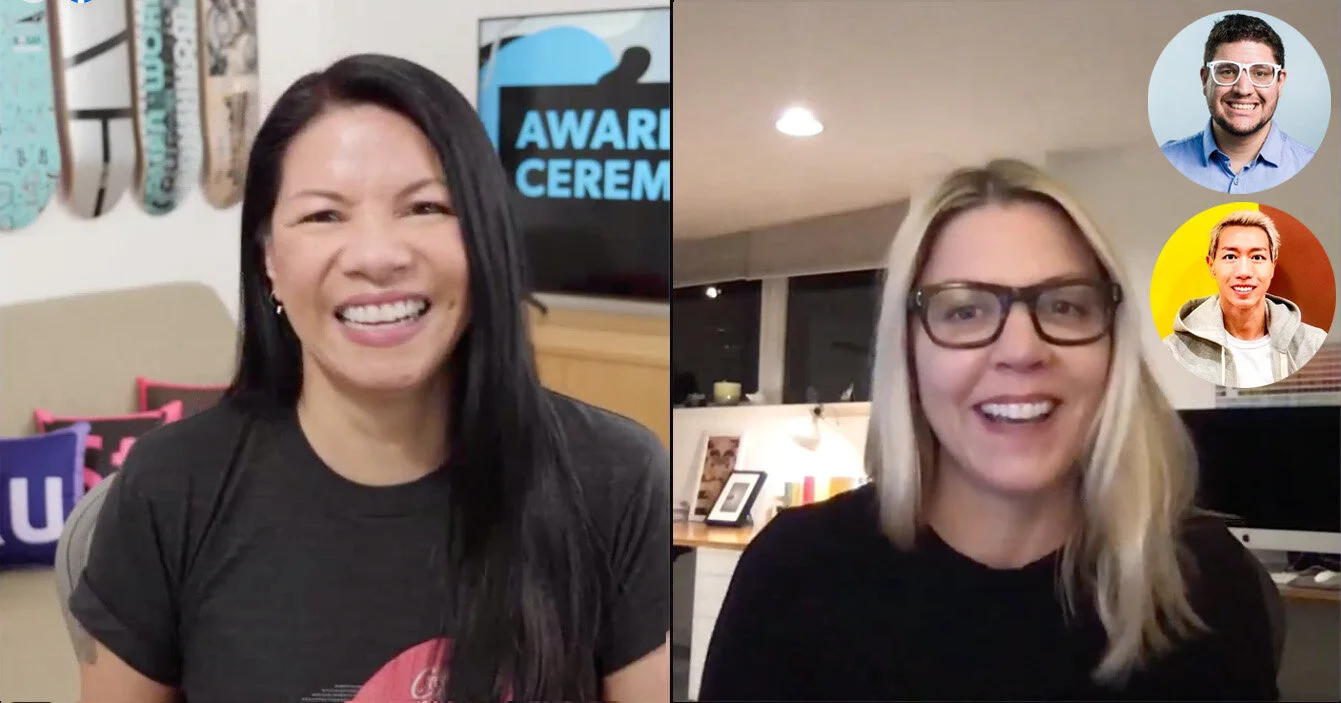DESIGN brief
—
Food insecurity and considerations of quality and equity
The pandemic is dramatically increasing food insecurity and straining an extremely stressed supply. Loss of employment and income continue to increase demand for charitable food delivery and meal offerings, as will the closure of in-person educational systems which were once a fundamentally nourishing source for school children.
Everyone involved in the food supply chain is interested in advancing the quality of groceries and cooked meals, and increasing the nutritional value of the food for families. This is a shared goal for nonprofit organizations, kitchens, pantries, food banks, distributors, and recipients alike.
How can we empower the parties involved to improve the system and better the nutritional value of stocked and served meals?
Robert Egger kicking off the brief
The challenge
—
Improving part of the chain of food collection and distribution
Teams from seven top-tier design concentrations were invited to work alongside Society of Digital Agencies (SoDA) for a two week sprint in response to the challenge put forth by Robert Egger, the founder of DC Central Kitchen, a nationally recognized “community kitchen”.
discovery
—
Make breakfast count
After the Adobe brief kick-off, my team went through a mind mapping exercise with existing insights and assumptions to shape our focus. Since the topic of food insecurity is quite broad, mapping and secondary research helped us to hone in on a specific problem to solve, for a specific meal, need, and audience.
PROBLEM STATEMENT
—
A single parent with young children, who struggles to provide 3 meals a day for them due to food insecurity, needs to find opportunities to give them a healthy breakfast regularly for optimal academic performance.
Synthesis
—
We need more than just food - we need to insist on nutrition
To succeed in improving part of the chain of food collection and distribution, we will launch Breakfast Matters - a web app geared towards improving the health and well being of families by alleviating hunger and malnutrition. We provide nutritious high-quality breakfast to families in need to bolster their physical and mental performance.
We’ve identified the following goals:
“01.
Provide nutritious breakfast to school-aged children and parents”
“02.
Educate families on the importance of breakfast and well-balanced meals”
“03.
Mobilize local action from the community”
ideate
—
Structuring the experience
After identifying key scenarios, our team defined the pathways our users would explore as they navigated the app. We initially conceptualized the idea of multiple tenants while considering a donation and volunteer feature. After careful consideration and iteration, we determined multiple tenants would make things unnecessarily complicated. We also didn’t want to run the risk of the parent and volunteer crossing paths. Incidentally, we decided to streamline the experience to stay laser focused on the core needs for our primary audience.
Detailed design
—
Bringing it all to life
Breakfast Matters tackles food insecurity with a singular focus: to assist single parents with young children, who struggle with strained budgets by providing access to regular healthy breakfast. We plan to partner with local food bank farms and pantries to provide users with choices of healthy pre-made meals for pick up at a local designated location. Each breakfast is made with three ingredients and can easily be replicated using the recipes provided in app. The aim is to not only provide healthy meals, but also empower our users and their children to recreate these simple breakfast meals when assistance is no longer needed.
The result
—
Design for Change Finale
The Adobe Creative Jam was a super fun opportunity to come together with industry professionals to solve real-world issues by designing experiences that bring ideas to to life. Starting with thirty-five teams, the judges narrowed down the playing field to the top ten finalists who had three minutes to present their solution. In the end, my team was awarded 1rst place winner!
The biggest compliment from the judges was the celebration of the simplicity of our solution. We wanted the app to be designed in a way that would make the task feel possible for our users. We were thrilled to receive positive feedback in our pursuit to create a simple, easy to use experience for families in need.
““When you think about product design, one of the biggest challenges is cutting things away and focusing and being really simple in your approach. This is a study in focus.””







